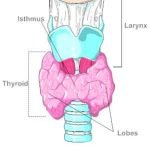A new study out of the Boston Children’s Hospital found that 40 percent of children between the ages of eight-months to two years are deficient in vitamin D. In a report published in the Archives of Pediatric and Adolescent Medicine, the study’s authors say the deficiencies result from kids being overweight, not taking vitamin supplements, and not drinking enough vitamin D-fortified milk. Apparently, the children were not exposed to enough sunlight to have any impact on their body’s ability to produce vitamin D levels — a problem not uncommon in adults, too — which leaves supplemental sources as the only alternative.
Vitamin D deficiency can make children’s bones more brittle, impair their skeletal development, give them bowed legs, make them tired and shaky, and in extreme cases, lead to rickets and even seizures. But these symptoms are rare; more typically, deficient kids (as with adults) show no symptoms at all. Only three of the 140 vitamin D-deficient kids in the study had soft or weakened bones, while another 13 showed signs of minerals leaching from their bones. The “silent” nature of pediatric vitamin D shortage worries researchers, because those seemingly benign deficiencies in childhood may well lead to very serious problems in adulthood, including an increased risk of cancer, a weakened immune system, cardiovascular problems, diabetes, hypertension, and kidney disease.
The problems that develop later on from pediatric vitamin D-deficiency become compounded if the deficiency continues into adulthood. And studies show that, in fact, vitamin D inadequacy is as common among adolescents and adults as it is among kids. In a 2004 study, Dr. Gordon found that 42 percent of adolescents lacked sufficient vitamin D. And according to a 2006 Mayo Clinic publication, about 36 percent of otherwise healthy adults in the US also lack adequate vitamin D, with that percentage jumping to 57 percent among hospital inpatients. The percentage is even higher in Europe, and among the elderly. And those estimates are based on the outdated model of 200 IU of vitamin D per day for adults and 400 IU per day for women who are pregnant or lactating and for children under the age of 10 years.

New studies show that the dose required to achieve a healthy blood level of vitamin D is somewhere in the neighborhood of 1,000–4,000 IU per day — which is still less than that obtained through several minutes of midday sun exposure. Vitamin D toxicity does not usually develop below 10,000 units per day.
Not surprisingly, the incidence of vitamin D deficiency goes up during the winter when access to sunshine becomes limited. Also, darker skinned individuals have more of a propensity to lack sufficient stores of vitamin D. According to an article in American Family Physician, “To produce a similar amount of vitamin D as persons with lightly pigmented skin, persons with darkly pigmented skin require three to six times more sun exposure.”
As alarming as the prevalence figures are given the potentially serious consequences of vitamin D deficiency, it’s equally alarming to discover that the medical community remains largely unaware of the issue, leaving many patients with wrong diagnoses. A 1998 study of 298 patients in a Massachusetts hospital found that most of those with a vitamin D deficiency did not get diagnosed correctly. The article in American Family Physician outlined several disturbing case studies. In one, an elderly man was suffering from progressive weakness and congestive heart failure. Turns out that he was vitamin D deficient. As the article mentions, the man was elderly, in a weakened state, malnourished, and without recent sun exposure — a prime candidate.
Symptoms that might indicate a deficiency in adults include muscle weakness, fatigue, and nonspecific aches and pains. You can imagine how many doctors would dismiss such symptoms as hypochondriasis. And dismissing the symptoms in this way is dangerous, because as mentioned above, vitamin D deficiency can lead to serious problems. For instance, one study found that putting elderly women on vitamin D supplementation in combination with calcium reduced the risk of falling by 49%. Other studies have found a 50% decrease in risk of large bowel cancer and prostate cancer by increasing vitamin D intake. And yet another study attributes 25% of breast cancer deaths among women in northern Europe to inadequate vitamin D levels. Other findings implicate vitamin D shortfalls in the development of cardiovascular disease, psoriasis, multiple sclerosis, arthritis, lupus, renal complications, and osteoporosis.
So should you start drinking milk by the jug, or force it down the throats of your kids to get enough vitamin D? Given the issues associated with dairy products, why pay for the milk and get all of its problems, when you can just take the supplement directly for a fraction of the cost? A better solution would be to:
- Get daily, direct sunshine for 10 to 20 minutes, and make sure you don’t completely cover your body whenever you’re outside.
- Lose weight, as vitamin D deficiency is more prevalent among overweight people.
- Supplement with 1,000 to 2,000 IU of vitamin D daily. It’s quite difficult to get enough of the vitamin from food sources, and as I mentioned earlier, it’s difficult to overdose on vitamin D at these levels.
:hc












How about D3? What makes it different from D. I believe it was your info. that got me to using D3. Thanks a bunch for all of your great help.
Phyllis Hemming
Vitamin D exists in nature in two primary forms:
Vitamin D2, or ergocalciferol, is found in plants.
Vitamin D3, or cholecalciferol, is the primary form of vitamin D that your body uses. D3 is what your skin synthesizes when exposed to sunlight. D3 is also available in animal products such as dairy and fish oil.
Both D2 and D3 are converted into 25-hydroxy-vitamin D, the primary circulating form of vitamin D, in the liver. 25-hydroxy-vitamin D is then converted into vitamin D’s active form, 1,25-dihydroxyvitamin D, in the kidneys. Pharmaceutical drug forms of activated vitamin D include calcitriol, doxercalciferol, and calcipotriene.83
You can buy supplemental vitamin D as eiither D2, D3, or a combination of both. It should be noted, however, that vitamin D2 is only about 20-40% as effective as D3 in maintaining serum concentrations of 25-hydroxyvitamin D, since it is more rapidly broken down in the body. For this reason, vitamin D3 supplements are usually considered more beneficial than vitamin D2 supplements.
Val, I think this is our problem.
i kind of rememberin my Mama saying something about some of us having a Vitamin D Deficiency. I have a doctor appt. in another week. I am going to have her order me a test called the 25(OH)D, also called 25-hydroxytiamin D.
We have the insurance to to this. You can have her write you a presribtion to go to a lab on a Sat. this way you don’t have to take off from work. You should also test Valencia and the Keyonna. I have most or all of these symtoms. This just might us.
Trust me, and try this.
Your blog is much very good and informative..
There are things that uncleared in my mind about how important vitamin D is,but now since i saw your site it seems clear to me..I am very much impressed by your blog content….thanks for the info..
http://www.thisthatandeverything.com
MY 2 YEAR DAUGHTER got pain at the age od 1,5 yr at her thigh area… i was confused BOUT reasons… then OUR DOCTOR SUGGESTED TO TEST 25hyd vitamin D3 WHICH WAS ONLY 16.6 UL ONLY. THEN DOCTORS ADVISE US THE SUPPLIMENTATION
I recently went to the Doctors with complaints of being very fatigued, joint pain, skin sensitivity at times and I see that those are some of the symptoms of Vit d deficiency. I did get mine checked and my lab value is 13. I was started on 50,000 u per week for 6 months. At times I would have muscle weakness, like my legs were cement and I couldnt lift them. I hope that these symptoms will go away after being on the vit s supplement!
Went to the doctor’s because of fatigue, joint and bone pain. Physical and Occupational therapy for tendonitis and bursitis. Still in pain. Now I am on 50,000IU’s per day for a month…my vitamin D level was 7. Still in pain and feel lousy. Still hoping this will take care of it.
I am Vitamin Def. ( just found out), I am now taking supplement, any other suggestions?
The importance of supplementing with D3 should have been stressed in the article firsthand.
Other people susceptible to D3 deficiency besides the obese, elderly, and dark-skinned are those furthest away from the equator, those with poor diet, those who rarely go out in the sun, and those who slather on sunscreen when they do.
The so-called authorities will have you believing that the sun is our enemy and should be avoided to prevent skin cancer. And, whatever you do, do not go out in the sun between the hours of 10:00 and 2:00. This is the PRECISE time you need to be sunbathing due to UV-B rays reflecting off the earth more readily at other times. Also, expose at least 50% of your body when you do go out. Only put on sunscreen as a last resort for this reason and the fact that most sunscreens add to your toxic overload which may CAUSE skin cancer and other forms. D3 PREVENTS many cancers, INCLUDING skin cancer. Just don’t bake yourself to the point of burning. Stay out in the sun as long as you want until the point of turning a light shade of pink, then cover up or move to the shade, wear a hat, etc. If sun exposure cannot be avoided then consider natural sunblocks first. Although these aren’t so great either, just better than the toxic stuff. Read an article on toxic cosmetic ingredients and you’ll know what I mean. While you’re at it, read on vitamin D3. You obviously have access to a computer. Use it!